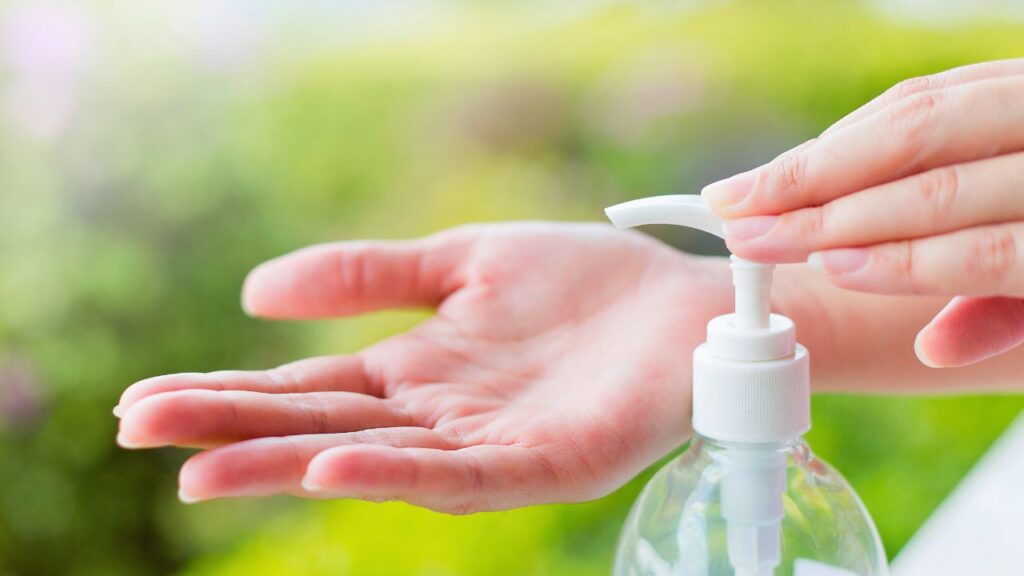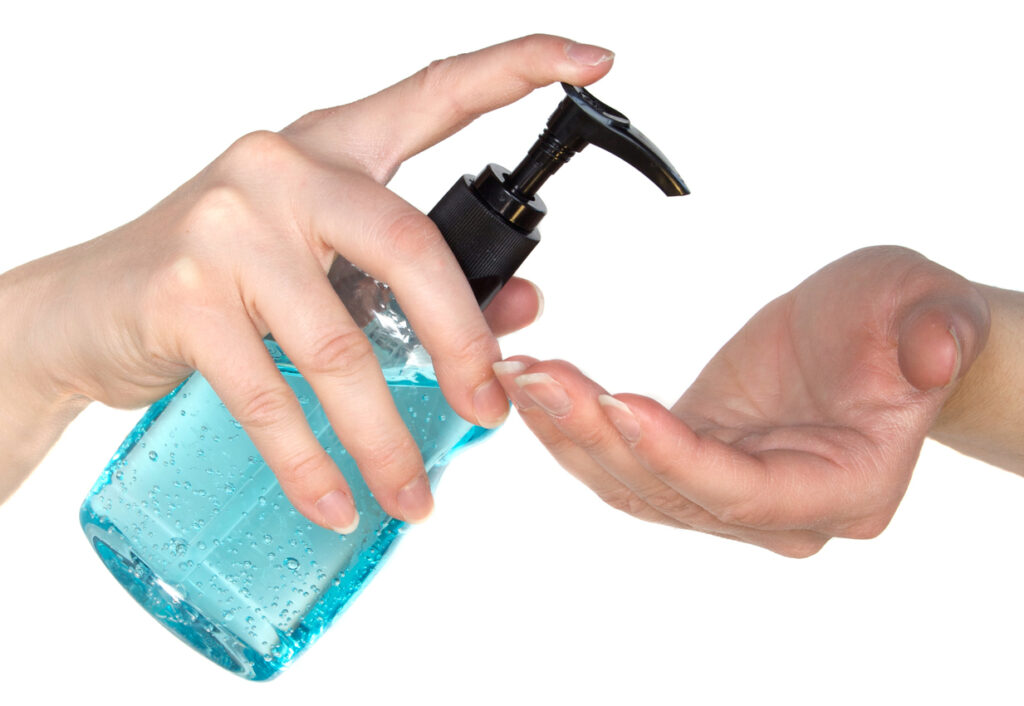Teens who experiment with illegal drugs or use prescription drugs recreationally can develop a substance use disorder, or what most people call an addiction. Teens can become addicted to heroin, opioid pain relievers, benzodiazepines, marijuana, hallucinogens, and many other drugs. When addiction escalates, teens can become resourceful, creative – and irresponsible – in their quest to get high. They can empty their savings account to purchase street drugs. They may steal money from their parents, family members, friends, or even strangers.
Or, they may try to get high off things they find around the house – like in the medicine cabinet or cleaning closet.
Is Your Teen Getting High From the Products in Your House?

“Unfortunately, parents are not even aware that this sort of thing exists in teens,” says Lisa Faguet, LCSW, Clinical Program Director at Evolve Treatment Centers in Agoura Hills. “They’re worried about drugs on the street and in school, but they have no idea that their teens can be getting high in their own home.”
It’s often younger adolescents who use these substances since they’re readily available at home. They’re also cheap and easy to find in all kinds of stores. From corner stores to grocery stores to big box stores, these products are everywhere, and anyone can buy them with no questions asked.
To spread awareness about this issue, we compiled the list below, which includes several common household products that adolescents can use to become intoxicated.
Household Items That Can Get You High
1. Cough Syrups
Some teens abuse cough medicines such as Robitussin or Nyquil by drinking full bottles of syrups. Teens call this Robotripping. The ingredient in these medicines that causes intoxication is dextromethorphan, or DXM, which has hallucinogenic properties. When taken in high doses, DXM can result in extreme euphoria and psychosis. Taken as directed, DXM is a safe cough suppressant. However, when abused, DXM can induce a high that can become dangerous and even deadly. DXM is the active ingredient in more than 100 over-the-counter cough and cold medicines.
2. Air Fresheners, Hair Sprays, and Deodorants
Aerosol sprays fall into a category of drugs called inhalants. Teens can get high from spraying these inhalants directly into their mouths. Or, some teens will inhale the substance by spraying it into a towel several times and then breathing in the fumes. This is called huffing. The chemical gases produce a mind-altering effect, but can also cause extreme damage to the brain and other vital organs. Huffing inhalants can cause sudden cardiac arrest and even death. Note: inhaling air fresheners, in particular, is known as Glading, after the popular brand of air fresheners, Glade.
3. Whipped Cream and Helium Balloons
A can of whipped cream contains nitrous oxide. Helium balloon tanks contain nitrous oxide as well. Nitrous oxide is also known as laughing gas, and dentists often use it in small amounts for patients during painful root canals or extractions. However, when inhaled recreationally, and in high amounts, nitrous oxide can cause dizziness, hallucinations, nausea, and vomiting. It can damage the brain and nervous system, cause respiratory complications, and more. The gas prevents oxygen from reaching the brain and heart. The organ damage caused by using nitrous oxide often cannot be reversed, even once a teen stops using it.
4. Markers, Correction Fluid, Glue, and Paint
Products such as permanent markers (e.g. Sharpies or Expo markers), correction fluid (e.g. White-Out), glues, and paint thinners contain volatile solvents that teenagers use as inhalants. This dangerous practice is known as huffing. Young teens who sniff solvents to get high are at risk of vital organ damage, bone marrow damage, central nervous system damage, limb spasms, irreparable hearing loss, unconsciousness, heart failure, and suffocation. We repeat: inhaling solvents is incredibly dangerous.
5. Electronics Dusting Spray
Adolescents often inhale aerosol products that are made to clean dust and debris from small electronics and computer keyboards. One commonly abused brand is Dust-Off. Teens will inhale Dust-Off (in slang, this is known as dusting) to achieve a short-term high. However, inhaling compressed air – like inhaling other household products – can cause hallucinations, delusions, dizziness, slurred speech, paralysis, and more.
6. Hand Sanitizer
Hand sanitizers and other antiseptics often have high concentrations of alcohol – around 60% in every small bottle. This is a higher percentage of alcohol than found in hard liquor like vodka and bourbon. Unfortunately, the high alcohol content motivates some adolescents to drink hand sanitizers. Also, schools often freely provide gel-based hand sanitizers for their students next to hand-washing stations. The effects are similar to alcohol intoxication, but can be more dangerous because they come on quickly.
7. Nutmeg
Though nutmeg in small amounts (such as when used in baked goods) is safe, eating too much can induce hallucinations and psychosis. Nutmeg contains myristicin, a naturally occurring chemical that, when taken in high amounts, can induce drowsiness, dizziness, confusion, and gastrointestinal pain.
If you find empty containers of these products around the house or see physical evidence that your teen might be abusing these substances or using these products to get high, address the issue with them right away. Prevent further access to the products or substances and seek support immediately. Contact a psychiatrist, therapist, or a substance abuse treatment center that specializes in treating adolescents with addiction problems.
8. Motion Sickness Medication
Dimenhydrinate, or Dramamine, is one of the at home drugs people abuse for the psychedelic effects that are experienced after ingesting high doses. Other motion sickness medications can be used for the same purpose, but Dramamine is the one most commonly used. Street names for motion sickness medication when used for the purpose of getting high include “substance D” and “dime.”
Ingesting high doses of dramamine can lead to hallucinations and euphoria, along with other serious side effects such as seizures, elevated heartbeat, convulsions, and coma.
9. Allergy Medication
Allergy medications such as diphenhydramine (Benadryl) is one of the common household items that get you high. Due to the extreme drowsiness Benadryl causes, one might experience feelings similar to recreational drugs after ingesting large amounts. While Benadryl is widely available and easily obtainable, it can be seriously dangerous when abused.
Overdosing on Benadryl can lead to heart problems, seizures, hallucinations, and death. In some cases, a person can overdose on Benadryl by accident because they will forget that they have already taken a dosage.
10. Nitrates
Nitrates, commonly referred to as “poppers,” are commonly abused for sexual enhancement and recreational drug purposes. Poppers are consumed by inhalation and produce an instant high. Inhaling nitrates is one of the most popular home remedies to get high.
Users will feel a head rush that lasts for a few minutes and wears off quickly. Some use nitrates for sexual enhancement due to the fact that nitrates relax your muscles.
Inhaling nitrates is dangerous to those who have heart problems because it can cause fast or irregular heart rhythms. Heavy overuse can also lead to damage to eyesight.
11. Mouthwash
If people are desperately searching for ways to get high at home, some use mouthwash due to the high levels of alcohol it contains. People may underestimate how high the concentration of alcohol is in mouthwash, and injesting it could lead to alcohol poisoning. Additionally, mouthwash is not meant to be consumed so it may contain harmful additives.
Signs of a mouthwash overdose include nausea, vomiting, dizziness, low body temperature, and slurred speech.
Warning Signs To Be Aware Of

Why do teens get high? They might simply be curious, or they might have an addiction.
It may be hard to tell whether or not someone is getting high on household items. Signs to watch for include general changes in behavior, sleep patterns, or weight.
You may notice household products running out more quickly or stains from products on the hands or mouth of the user.
Those struggling with addiction may go to great lengths to hide their substance abuse. It’s necessary for parents to encourage open communication with their children about substance abuse. Inform your children of the dangers involved with abusing household substances, and urge them to let you know if they are struggling with substance abuse.
While many will not willingly admit their addiction, they may be more likely to do so if they have a supportive environment to turn to.
Does Your Teen Have a Substance Abuse Problem?
We’ll repeat: if you find evidence your teen is abusing these products or substances, do three things immediately:
- Address the issue with them.
- Remove access to the products or substances.
- Seek professional support.
After a full evaluation from a mental health professional, you may learn that your teen needs treatment at a drug rehab facility for teens, a dual diagnosis treatment center for teens, and/or a drug detox facility.
Even if a teen only uses these substances once or twice, due to peer pressure at school or on dares from friends, experimenting with household products can lead to abusing illegal substances, like recreational drugs, alcohol, or hard drugs like heroin or cocaine.
In addition to causing permanent organ damage and severe health complications, sniffing or huffing any of these household products can cause Sudden Sniffing Death Syndrome. This is when the heart stops after beating irregularly for a while due to inappropriately sniffing, huffing, or bagging inhalants (which is when teens inhale the substance from a plastic or paper bag, which reduces oxygen flow even more).
Why Would My Teen Huff Inhalants?
When people use inhalants to get high, they do it for the same reasons they use alcohol or drugs. Some are simply experimenting – but experimenting with inhalants is risky should be prevented immediately. We can’t stress that enough. Other teens use drugs, including inhalants, as way of escaping the internal pain that can be caused by mental health or behavioral disorders. At a drug rehab or dual diagnosis center, staff will work with you and your teen to uncover the root cause of the behavior and begin treating it, whether it’s past trauma, emotion dysregulation, physical or sexual abuse, or a behavioral/mental health issue.
During treatment, adolescents learn coping strategies to manage the symptoms of any emotional or behavioral disorders they have. They also learn strategies to prevent relapse, if diagnosed with a substance use disorder.
Teen Treatment: What to Look For
Make sure to search for a substance abuse treatment center that has strict safety standards in place to protect clients. A good residential treatment center (RTC), partial hospitalization program (PHP), or intensive outpatient program (IOP) recognizes that teens can be both motivated and resourceful when they want to get high. That’s why good teen treatment centers do not keep household products, cleaning products, or office supplies lying around in plain sight. They keep them under lock and key, along with toiletries and any other products that can be misused. The best teen drug rehab centers conduct random body checks and drug checks to ensure teens do not get high during treatment.
To learn more about what to look for in a treatment center for an adolescent living with a substance use disorder, read our article “How to Choose a Teen Rehab Center.”































































